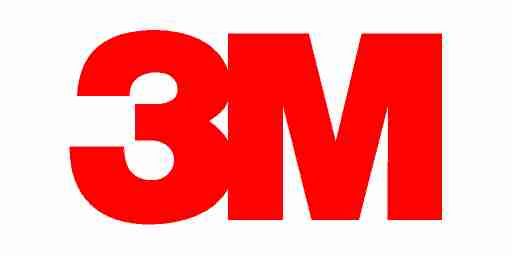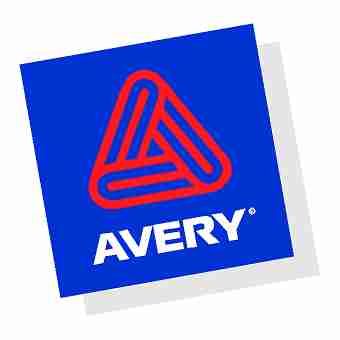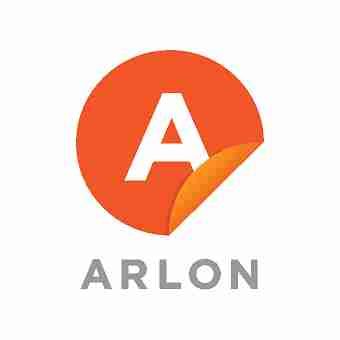Sign Basics 101
By Karen E. Claus, University of California, San Francisco, California
and R. J. Claus, Institute of Signage Research. Palo Alto, California
Have you considered the impact that your sign has on your business?
Most businesses regardless of size depend heavily on their signs. Signs are one of the most efficient and effective forms of communication available to the small business. Signs help people find you, they reach people who are passing by your establishment, they present an image of your business. In short, signs tell people who you are and what you are selling.
Signs are such a powerful communication medium that it is difficult to estimate the extent of their influence. Other media require the directed attention of the person receiving the message. Signs, however, can convey a message while creating a mood or feeling of atmosphere. It is not necessary for people to give full attention to your sign in order to derive meaning from its presence.
What Is a Sign?
A sign is the most direct form of visual communication available. In fact, so many people use signs without a second thought that it is easy to overlook their importance. When we cannot talk to other people directly in a given location, we tack up signs: "Wet Paint", "Beware of Dog", "Enter Here", "Garage Sale", etc. Signs are the only form of mass communication directly available to everyone--they are the people's street communication system.
What Signs Can Do for Your Business?
Signs perform three major communication functions for your business:
they give information and directions
they provide a format for street advertising
they build your image
Signs Give Information about Your Business and Direct People To Your Business Location.
Signs index the environment so people can find you. This is especially true for travelers, new members of your community, and impulse shoppers who may be on a journey to purchase a particular good or service which you are selling. North Americans are mobile. Each year 40 million of us travel over 1.7 trillion miles by automobile and approximately 19 per cent of us change our place of residence. A primary source of customers for your business is the large number of people who are new to your community or who may be just passing through. Your sign is the most effective way of reaching this mobile or transient group of potential customers. Signs can correct a poor location by substituting effective communication for poor site characteristics. If your business is located on a site which is not visible or in a building which does not correspond with the goods or services offered, your sign could overcome this disability. For example, most buildings are not built to conform to the design needs of any particular type of tenant. Without an effective sign it is often impossible to determine what type of business is being conducted in a given building.
In addition, when your site is located off a busy traffic artery or in an area which is not easily accessible your sign can communicate to people who are passing on a busy street several blocks away. If you are located off a busy freeway but far from an exit, your sign becomes your main device for directing people to your business. High-rise signs are used when a business is located away from potential customers' normal pathways of travel.
Signs Are Street Advertising. Your sign provides an easily recognizable display format for the goods or services you are selling. For most businesses the street is where potential customers are. The message conveyed on the street reach people who are close enough to make a purchase. Street advertising also helps people develop a memory of your business name and the products and services you sell. People tend to buy from businesses they know. Signs can build an image for your business and help you identify with the market segment you are trying to reach.
Through materials and design, a sign can appeal to a given group of potential customers. For example, some firms attempt to capture the youth market, others senior citizens, others unmarried single people and so forth. If you have a particular market segment that you wish to attract to your business, your sign can be an important means of bringing these people in.
The Advantages of Signs
On-premise signs are your most effective and efficient means of commercial communication because they are inexpensive, available, practical, easy to use, always on the job, and directly oriented to the trade area of your business.
Signs Are Effective
Your sign is an integral part of your advertising program along with the other forms of commercial communication such as television, radio, newspapers, magazines, and billboards. There are four basic criteria used to judge the effectiveness of these advertising media:
coverage of the trade area
repetition of a message
readership of a message
cost per thousand exposures of a message.
Two other criteria important for the small business owner are:
availability
ease of use.
Let's see how your signs measure up to the above criteria.
Signs are oriented to your trade area. Signs do not waste your resources by requiring you to pay for wasted advertising coverage. The people who see your sign are the people who live in your trade area. Signs are always on the job repeating your message to potential customers. Your on-premise sign communicates to potential customers twenty-four hours a day, seven days a week, week after week, month after month, year after year. Every time people pass your business establishment they see your sign. The mere repetition of the message will help them remember your business. Nearly everyone reads signs. Signs are practical to use for nearly everyone is used to looking at signs and using signs, even small children. Studies have shown that people do read and remember what is on signs. When special items are displayed, sales increase for these particular items within the store.
Signs are inexpensive. When compared to the cost of advertising in some other media, the on-premise sign is very inexpensive. Table 1 indicates the cost-per-thousand-exposures for various media in a given type of community. Unless your trade area encompasses an entire city or region, where you must rely upon broad based media coverage, there is no better advertising dollar value than your on-premise sign. Signs are available to each and every shop owner. There is no need to schedule the use of your sign. Your sign is available to you whenever you need it and to be used however you please. Signs are easy to use. No special skills or resources are needed to operate a sign once it has been installed. If it is an illuminated sign, all you need to do is flip the switches and that may not be necessary with timing equipment. Once the initial expenditures are made, no special resources or professional services are needed. You need only operate and maintain your sign.
Typical Monthly Advertising Costs of Various Advertising Media Table 1
Cost Per Thousand Exposures in a Community of Approximately 130,000
Population Cost to Reach Total
Adult Audience/Month Each 1,000 Adult Exposures Cost
Newspaper
(1-1/4 p. ad/week) 685,000 $1,008.00 $1.47
Radio
(6 1-min. spots/wk.) 91,200 $264.00 $2.90
Television
(6 1-min spots/wk.) 1,176 $1,580.00 $1.34
Outdoor Billboard, Painted 900,000 $500.00 $0.56
Junior posters 192,000 $25.00 $0.13
Sign
(8'x 6' double-faced, acrylic plastic, internal illumination) 1,050 $58.33 $0.06
Sources: Claus, K.E. and Claus, R.J., Signage, Planning Environmental
Visual Communication. Palo Alto, Calif.: Institute of Signage Research,
1976, p. 31.
Checklist for Ordering a Business Sign
Before you select a sign for your business there are several things you need to consider. A competent sign company in your area can help you with the answers to some of these questions if you are unsure how to obtain them.
Who are your customers?
Potential customers for your business are people who reside in your trade area. Most of your customers come from the immediate area within a half mile to a mile of your business location. Trade areas come in assorted shapes and sized depending upon the business. Trade areas may also vary seasonally.
How do you get information on potential customers?
Plot a dot map of your customers as soon as you begin business. This is easily done by plotting the addresses of people who stop in your store (and particularly of those who purchase) as a dot on a street map of your city. Within a few months time you will have a fairly clear idea of the trade area from which you are drawing your customers. You will then be able to decide what type of sign would best meet the needs of the people in that trade area. For example, if your customers can only reach you by automobile or you are located on a very busy street, the type of sign that you use will be very different than if you have a shopping center location and people must walk to your store from parking lots.
Obtain your street profile from a city traffic engineer. Since your sign communicates to people who pass your business establishment, you can direct your message to potential customers if you know what type of traffic passes your door. Your city traffic engineer can provide information which will tell you: where people begin and end their trips, how people travel, when people travel by time of day, why people travel, and where they park when they reach a destination. Even small cities and towns have traffic volume maps available to tell you how many people pass by your business every day. Know how many new people move to your area each year. This is a potential market for your business. This type of information can be obtained from any board of realtors, chamber of commerce or police department.
How are you going to communicate with the customers?
In order to communicate effectively, a sign must be noticeable and readable. A sign must be noticeable. After a while a sign becomes part of the landscape. It loses some of its ability to attract attention. By periodically changing some small design element or by using changeable copy, a sign can continue to attract interest. Time and temperature devices or rotating and moving parts can be used to maintain interest in a commercial message. Time and temperature units also provide a needed public service. A sign must be readable. A sign needs to be large enough to read. You need to know how far a person is from your store when he first sees your sign and the real speed of traffic on your street. With this information, a competent sign company can use a formula to calculate the necessary size for your design and build you an effective sign.
What are you trying to say?
Decide on a message that is clear and simple.
Focus on key words.* Choose one or two words which describe your business.
* Clever or strange names may only attract certain customers.
Be Brief. The cleaner and clearer the message, the more impact it has. Listing or names or unclear symbols confuse rather than communicate.
What image are your trying to portray?
Design of your sign is very important. Your sign tells people a lot about your business. Stark simple design and materials may suggest discount prices and no frills. Elegant and expensive sign materials may suggest luxury goods and services. Two basic design considerations are important when ordering a sign.
Physical elements of sign design.
These include considerations such as size, placement, materials and structure. The size of the sign is an important consideration for your business. The biggest sign that you can afford may not necessarily be the best one for your needs. A sign should go with its surroundings. A sign which is either too big or too small will not communicate your message effectively.
The number of signs is also important. Too many signs compete with one another and reduce the effectiveness of your message by presenting an image of confusion to potential customers. The materials used by your sign determine its appearance and performance. For example, differences in cost, appearance, color, durability, flexibility and reaction to extreme weather conditions can be found in the many types of plastics available. The structure of a sign also contributes to its effectiveness. Pole covers and cantilevered construction help portray an attractive message.
Graphic elements of sign design.
Graphic elements of design include layout of the message, colors, lettering, shape, symbolism, harmony, and daytime versus nighttime lighting conditions.
Legibility is a test of good design.
If your sign is well designed, it will be easy to read. Legibility means that the letters or characters on the sign are distinct from one another. Some color combinations of background and letters give excellent legibility while others are very poor. To test your sign's legibility, drive past your business and see if you can read it from a distance. Look at it both day and night. Some signs are difficult to read because of illumination problems such as glare from street lights, signs on nearby business establishments, or shadows caused by buildings. A well-designed sign blends with the environment, has a message impact and overcomes viewing problems.
How much should your sign cost?
You should consider several factors when determining the cost of your on-premise sign.
A sign is an investment.
Your sign is one of the most permanent parts of your business and is exposed to weather and constant use. The average life of signs varies from five to eleven years, depending on type of materials used, construction and other factors. Find out how many years of service to expect from your sign. It pays to purchase good materials if you intend to use the sign over a period of years.
Maintenance costs.
No business can afford to have its sign fall into disrepair. A dilapidated sign tells the public that you are not concerned with your business image or their visual environment. Some types of signs are virtually maintenance free while others require more attention. Find out how to replace burnt out bulbs or tubes in your sign. Determine who is responsible if the wind blows your sign down and someone is injured.
Banner Basics
INSTALLATION:
If you're going to install the banner, be sure it is securely anchored. If used outdoors and strung between two structures, be aware that the wind can exert considerable force upon it. Tie it securely to guy wires that can take such a load. It should be taut, but not stretched tight. Slight sagging is inevitable.
CLEANING:
Periodic cleaning will keep your banner looking great. To clean, use water and a mild detergent. Avoid harsh cleaners and solvents that might damage the fabric.
STORING:
Banners should always be rolled for storage, never folded. It's best to roll the banner around a tube that is four or five inches in diameter. If the banner is lettered with vinyl graphics, it is a good idea to roll it with a sheet of paper over the face so that any adhesive along the edge of the letters that becomes exposed during storage will not adhere to the fabric it touches. It's also better to roll banners with the graphics facing out.
EXPECTATIONS:
It should go without saying, but don't forget that a banner is made of fabric, and when used outdoors, is at nature's mercy. Be realistic in your expectations. It shouldn't be a substitute for a permanent sign done on a more rugged material, such as plywood or metal. Since a fabric sign may be subject to environmental conditions that are extreme at times, we cannot be responsible for damage that might be done to the banner (or caused by the banner) while in use. This also applies to damage caused by improper installation




